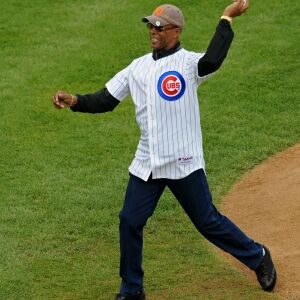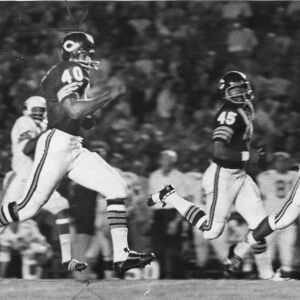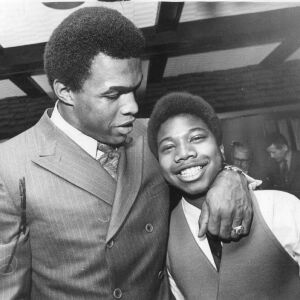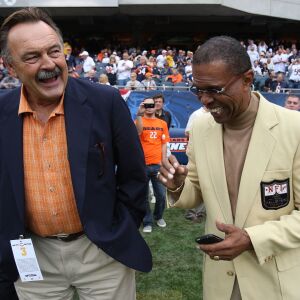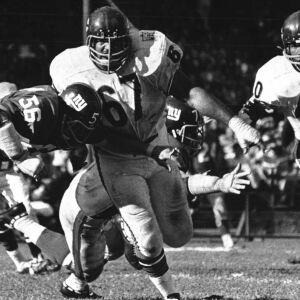There is what was, and there is what might have been. What should have been.
There is the stirring memory of what Gale Sayers did as a running back for the Bears, and there is the unshakeable belief that he would have done so much more if not for the shortcomings of the human knee.
Here one moment on the football field, and gone the next. The Kansas Comet indeed.
Sayers died Wednesday at 77 after dealing with dementia for years. He will be remembered most for a brilliant afternoon in which he tied an NFL record with six touchdowns in a game, and he will be remembered for injuries that robbed him of his speed and agility. You couldn’t talk about one thing without referencing the other.
There was always that wistfulness attached to Sayers, maybe not by him but by us. It says everything about how good he was that he was voted into the Pro Football Hall of Fame despite having played just five full seasons. It says: You know exceptional when you see it. It says: Whatever ideas you might hold about the importance of longevity are waived when someone like Sayers comes along.
Walter Payton was Sweetness. Sayers was Greatness.
But we wanted to see more of that greatness. That’s all. We shook a fist at the sky when it came to Sayers.
If you were a kid in the Chicago area in the 1960s, you pretended you were Ernie Banks (if you were a Cubs fan), Bobby Hull or Gale Sayers. If you were shaving at age 11 and liked to step on bugs, you probably pretended you were Dick Butkus. All of it depended on the season. In your mind, you were sure you were changing directions on a dime as you ran, just like Sayers did, football tucked to your side, opponents looking befuddled as they tried to tackle smoke. You fools! In reality, you were moving at the approximate rate of a box turtle. But no matter. In that moment, you were the great Bears running back. Life was good.
Sayers: "I played as hard as I could."
— Chicago Bears (@ChicagoBears) September 23, 2020
Five years ago on the 50th anniversary of Gale Sayers 6-TD game, @JeffJoniak sat down with the legend himself to reflect on one of the most memorable performances in NFL history. A must watch as we remember #40. pic.twitter.com/EBpI7M8vkt
You learned hard lessons from Sayers’ career, lessons you didn’t ask to learn. That life can be unfair. That the people you thought were indestructible were human just like you. That things happen, sometimes in a blink of an eye.
But Sayers would go on to teach other lessons. That there were other things in life besides athletic success. That determination in one pursuit could be applied to other pursuits. After his career ended, he went back to the University of Kansas, where he had earned the nickname the Kansas Comet, to get bachelor’s and master’s degrees.
He and Bears teammate Brian Piccolo, who was white, taught us lessons about friendship, especially during a tumultuous time in our country’s history. They were believed to be the NFL’s first interracial roommates for road games. Piccolo was there for Sayers through his injuries, and Sayers was there for his friend when Piccolo was dying of cancer. America wasn’t used to seeing a black person and a white person care so much about each other.
Even though Sayers’ numbers were compressed in a modest amount of time, they were mindboggling. But if you’re looking for stats that describe his versatility, here are the only ones that matter: During his career, he had a 103-yard kickoff return, an 85-yard punt return, three 80-yard pass receptions and a 61-yard rushing touchdown — all for touchdowns. Oh, that season in which he had the 103-yard return? He had two 97-yard kickoff returns for touchdowns, as well. Whatever you think you know about multi-threat players is bogus if you don’t know about Sayers.
His running style was built on hesitation moves and sudden cuts that left would-be tacklers looking like over-served guests stepping off a party boat. It wasn’t that he was reluctant to run over opponents. It was that his instincts told him there was a better way. We were all better for it.
He was averaging 6.2 yards a carry in 1968 when he suffered torn anterior cruciate and medial collateral ligaments in his right knee. The injury would change his career forever.
I suppose a case could be made that Sayers became bigger than life precisely because his career was cut short — that by leaving us to yearn for more, his legend grew even more. But go back and watch his highlights. You’ll see what we saw. You’ll know what we knew. He was spectacular. Yes, it was a shame not to be able to see what he could have done with two healthy legs over 12 seasons.
But what we did have, man, was it wonderful. Perhaps not enough, but wonderful. Mythmakers? No need for them here.

































